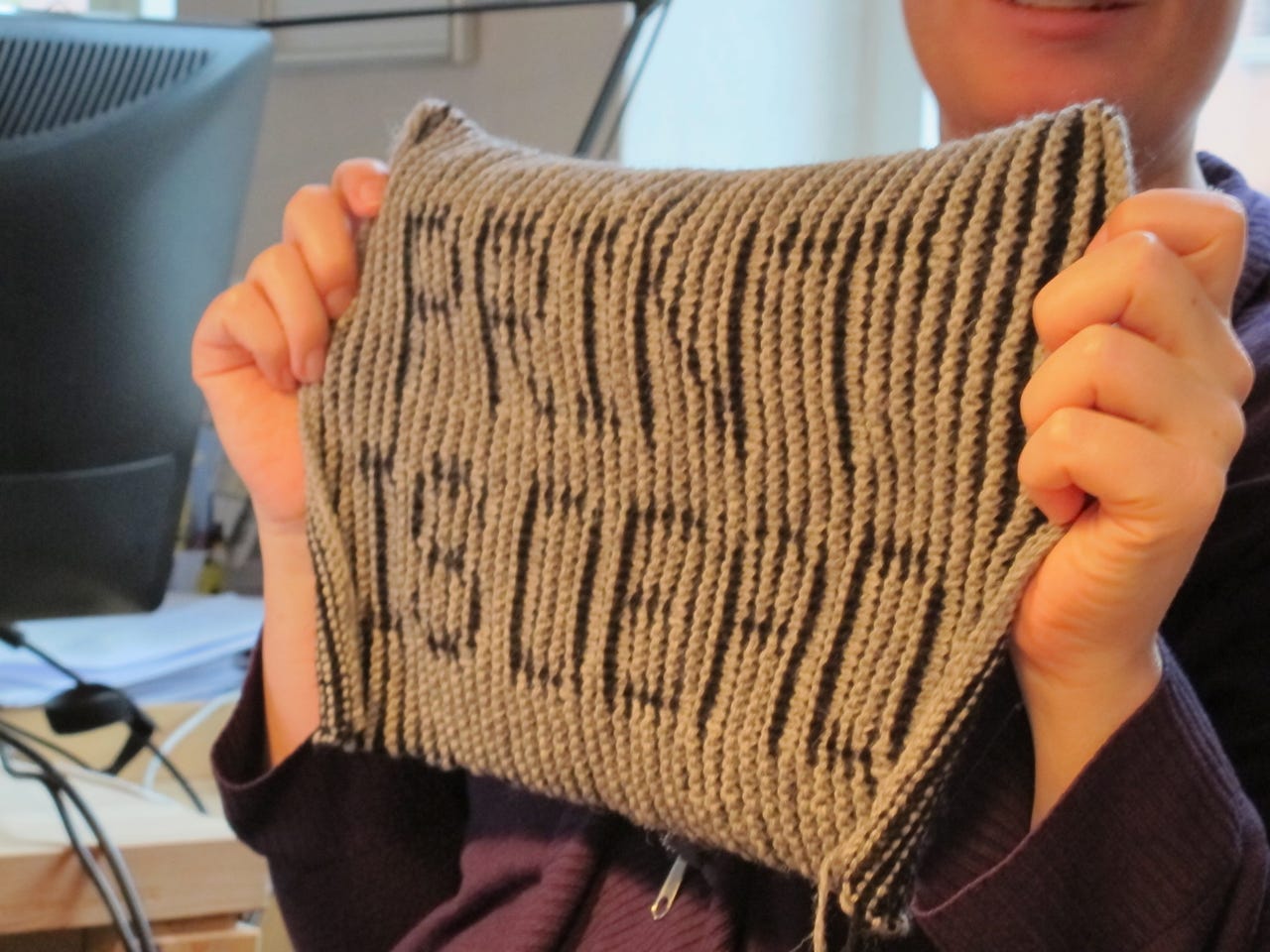The high tech science behind 3D knitting (yes knitting)


Your grandma's pastime could soon be a game changing trend in the apparel industry.
That's because researchers at Carnegie Mellon University's Textile Lab have figured out how to translate 3D designs into stitch-by-stitch instructions for industrial knitting machines.
The result could be a new wave of small-batch and one-off custom-designed apparel, which, outside of grandma's Christmas presents, is currently a white whale in the garment industry.
Automation is nothing new in textiles, but so far it's only ever worked at scale.
Garment makers use industrial knitting machines to crank out thousands of identical knitted pieces. Running small batches on these machines is impractical due to the cost of setting up new design runs.
"Now, if you run a floor of knitting machines, you also have a department of engineers," said James McCann, assistant professor in CMU's Robotics Institute and leader of the Textiles Lab.
He further explained that garment designers rarely have the expertise to program the machines their businesses rely on. "It's not a sustainable way of doing one-off customized pieces."
McCann and his colleagues developed a method for turning 3-D meshes -- a common method for modeling 3-D shapes -- into instructions for a widely used knitting machine called a V-bed.
The CMU algorithm takes the limitations of V-bed knitting machines into account. Input instructions create patterns that work within the limits of the machine and "reduce the risk of yarn breaks or jams," according to a CMU spokesman.
Makers will be familiar with the process of rendering 3D designs into input instructions for 3D printers. McCann's team has brought the same capability to existing industrial knitters.
The upshot for apparel makers and consumers could be a new wave of customization. Gloves, shoes with knitted uppers, and weave colors could be ordered to suit customers' precise sizing and preferences.
"Knitting machines could become as easy to use as 3-D printers," McCann said.
Shoe companies are already exploring the viability of running small batches of one-off shoe designs and customizing products for fit and preference, suggesting a possibly huge market for this technology.